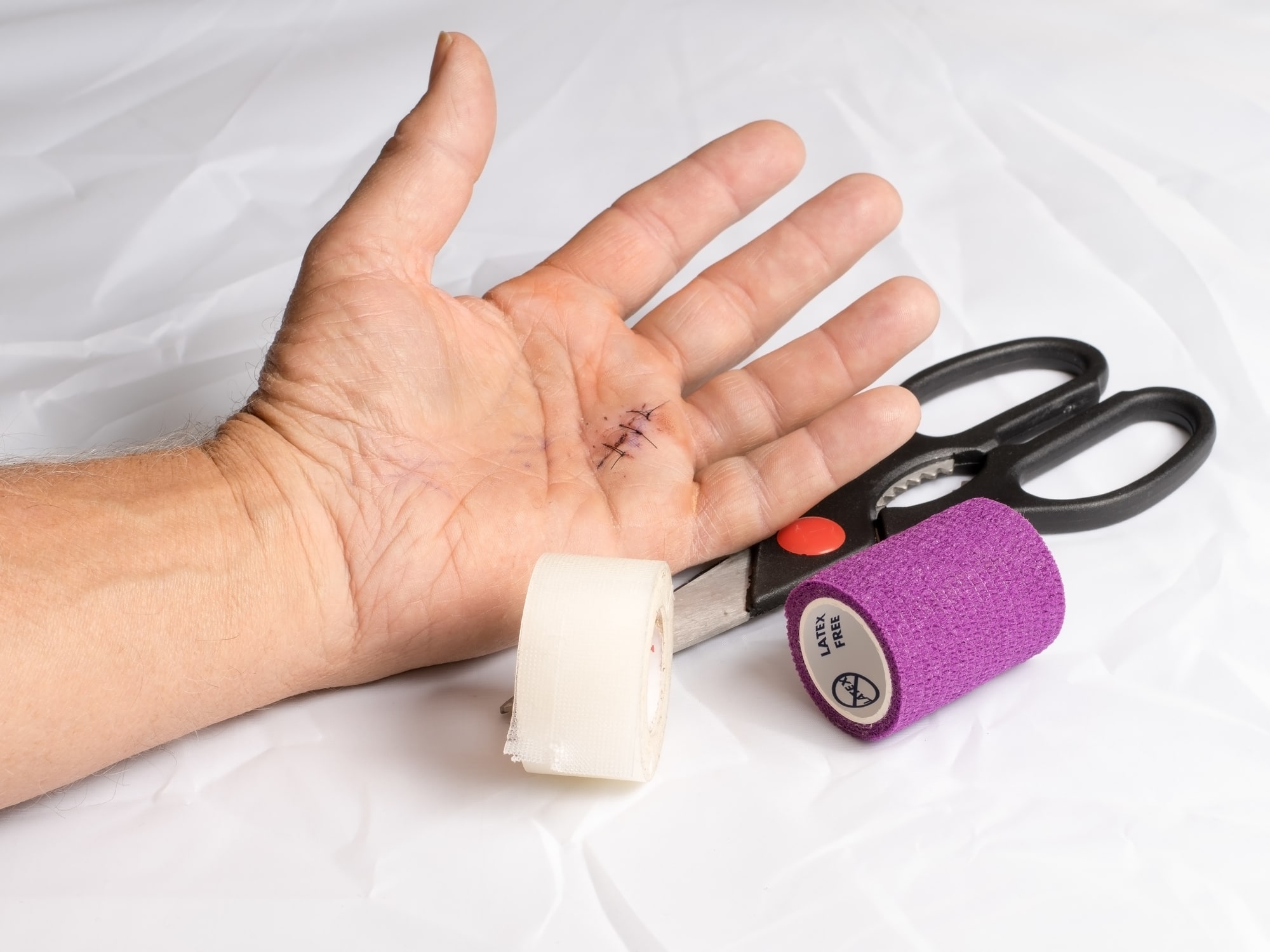Whether on the job or at the playground, cuts happen. Often, we can simply slap on a Band-Aid and carry on.
However, some cuts leave us questioning whether or not a home bandage will suffice. Knowing when to get stitches can help keep your health intact. First, let’s discuss the importance of stitches and then reveal how to know if you need stitches.
Stitches Overview
Stitches refer to loops of thread, made from silk, nylon, or other durable material. Doctors use them to stitch together skin, similarly to the way you might sew together rips in your clothing.
Depending on the type of wound, a doctor may choose to use an alternative to traditional stitches. They might use staples, dissolvable stitches, glue, or a butterfly stitch to help your cut heal.
Purpose of Stitches
While a Band-Aid offers support, pressure, and protection, stitches offer a little bit more. Stitches will:
- minimize bleeding
- protect things from entering the wound
- hold the skin together for the body to properly mend the wound
- minimize scarring
Sutures may not sound like fun, but they keep a bad wound better protected, and speed up the healing time and efficiency.
When to Get Stitches
When do you need stitches? Use this guide to help you decide whether or not your wound requires a trip to your local urgent care facility.
Bleeding
Blood seeping from your body can seem frightening in any instance, especially when dealing with a child. Address the bleeding by applying steady pressure to the wound.
If it spurts blood or you can stop the bleeding rather quickly, then you can carry on. But, if pressure will not stop the bleeding within 10 minutes, you need to seek medical attention.
Wound Location
A deep cut on the finger, you may opt to take care of at home. The same cut on the face, however, you may want to get stitched, to reduce scarring. Any cut in a sensitive area or near a joint may need stitches.
Depth
Most superficial cuts you can leave alone. Cuts that go deeper than 1/4 inch generally require stitching.
Signs that the wound goes deeper than 1/4 inch include:
- the appearance of a yellowish, subcutaneous fat layer
- visible tendon or bone
Puncture wounds and small cuts can be much deeper than they appear.
Length and Width
A small, shallow cut typically heals fine on its own. However, you should let a doctor look at any cut longer than an inch in length.
Even a small cut that gapes, also requires medical attention. In order for the body to repair itself, it needs the edges of the wound closed.
Edges
A perfectly straight cut might heal on its own without much scarring. Jagged cuts, however, may leave ugly marks if left alone. Sutures help to clean up the ragged edges on a wound.
Head to Thibodaux Regional Urgent Care – Thibodaux Right Away
Now that you know when to get stitches, head to urgent care right away if the wound fits the criteria. Waiting too long puts you at risk for infection, and increases your risk of scarring.
Visit us at Thibodaux Regional Urgent Care – Thibodaux for stitches and for any other urgent medical services you may require.

